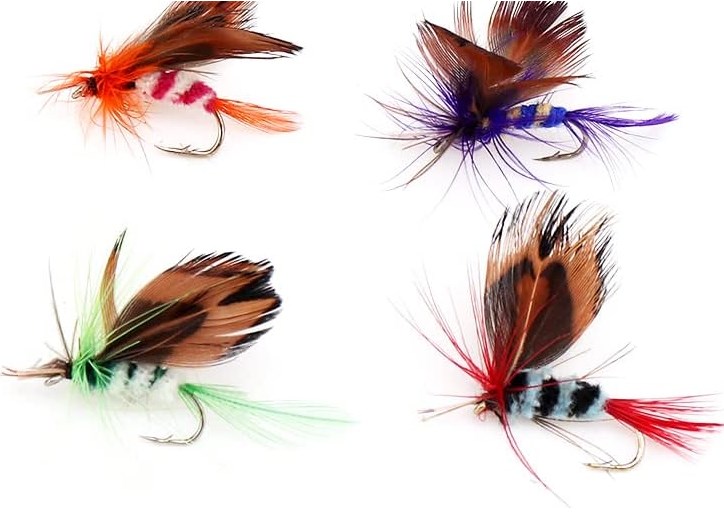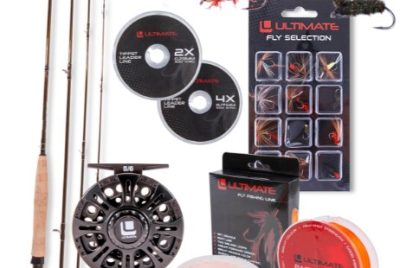Fly Fishing Lures for Trout
Introduction
Fly fishing for trout is not just a hobby; it’s a passion that connects me with nature and the thrill of the chase. As an enthusiast and advisor, I’m here to share my knowledge and expertise on choosing the right fly fishing lures to enhance your trout fishing experience.
Understanding Trout Behavior

To effectively catch trout with fly fishing lures, it’s essential to understand their behavior. Factors such as water temperature, time of day, and available food sources influence where trout congregate and how they respond to lures.
Types of Fly Fishing Lures
Fly fishing lures come in various types, each designed to mimic different stages of aquatic insects or other prey that trout feed on. Dry flies float on the water’s surface, imitating adult insects, while wet flies sink below the surface to imitate emergers or drowned insects. Nymphs imitate immature aquatic insects, and streamers mimic baitfish or other larger prey.
Choosing the Right Lure for Different Conditions
Selecting the appropriate fly fishing lure depends on several factors, including the stage of insect activity, water clarity, and current speed. By observing insect hatches and adjusting your lure selection accordingly, you can increase your chances of enticing trout to strike.
Top Fly Fishing Lures for Trout

Among the myriad of fly fishing lures available, some stand out as particularly effective for trout. Dry flies like the Adams or Elk Hair Caddis are classic choices for imitating adult insects on the surface. Wet flies such as the Pheasant Tail Nymph or Woolly Bugger are versatile patterns that can imitate a variety of aquatic insects or small fish.
Techniques for Using Fly Fishing Lures
Presentation is key when fly fishing for trout. Proper casting technique, natural drifts, and lifelike retrieves can make all the difference in enticing a wary trout to strike. Experiment with different techniques to find what works best in your fishing environment.
Considerations for Fly Fishing Equipment
The right equipment can significantly impact your success when fly fishing for trout. Choose a rod weight and action that matches the size of trout you’ll be targeting and the water conditions you’ll be fishing in. Pair your rod with an appropriate reel and line to achieve optimal performance.
Seasonal Variation in Trout Behavior

Trout behavior varies throughout the year, with changes in water temperature and insect activity influencing their feeding patterns. Understanding these seasonal fluctuations can help you adapt your fly fishing strategy for maximum success.
Locating Trout Hotspots
Trout tend to congregate in specific areas of rivers and streams where food is plentiful and conditions are favorable. Look for features such as riffles, pools, and undercut banks, which provide shelter and access to food sources.
Conservation and Ethical Considerations
As stewards of the environment, it’s essential to practice responsible fishing ethics when fly fishing for trout. Follow catch and release practices whenever possible, handle fish gently to minimize stress, and respect fishing regulations to preserve trout populations for future generations.
Cost-Effectiveness of Fly Fishing Lures

Investing in high-quality fly fishing lures is essential for success on the water, but it doesn’t have to break the bank. Balancing quality with budget-friendly options ensures that you have the right lures for the job without overspending.
Where to Purchase Fly Fishing Lures
Whether you prefer shopping online or browsing in-person at a local fly shop, there are plenty of options for purchasing fly fishing lures. Online retailers offer a wide selection and convenience, while local fly shops provide expert advice and personalized service.
User Experiences and Reviews
But don’t just take my word for it – hear what other anglers have to say about their experiences with fly fishing lures for trout. From seasoned veterans to beginners, anglers share their successes, failures, and insights into what makes a particular lure effective on the water.
Conclusion

In conclusion, mastering the art of fly fishing for trout with the right fly fishing lures is a rewarding and fulfilling pursuit. By understanding trout behavior, choosing the right lures, and honing your techniques, you can enjoy countless hours of excitement and adventure on the water.
FAQs
- What is the best time of day to fly fish for trout? The best time to fly fish for trout is typically early morning or late afternoon when insect activity is highest and trout are most active.
- How do I know which fly fishing lure to use? Observation is key – watch for insect hatches and mimic them with your lure selection. Experiment with different patterns and techniques to find what works best.
- Can I use the same lure for different types of trout? While some lures may be effective for multiple trout species, it’s essential to match your lure to the specific preferences and feeding habits of the trout in your area.
- What should I do if I catch a trout out of season? If you accidentally catch a trout out of season, handle it carefully and release it unharmed. It’s essential to follow fishing regulations to protect fish populations and preserve the ecosystem.
- Are there any regulations I need to be aware of when fly fishing for trout? Yes, fishing regulations vary by location and may include restrictions on catch limits, lure types, and seasonal closures. Always familiarize yourself with local regulations before fishing.



